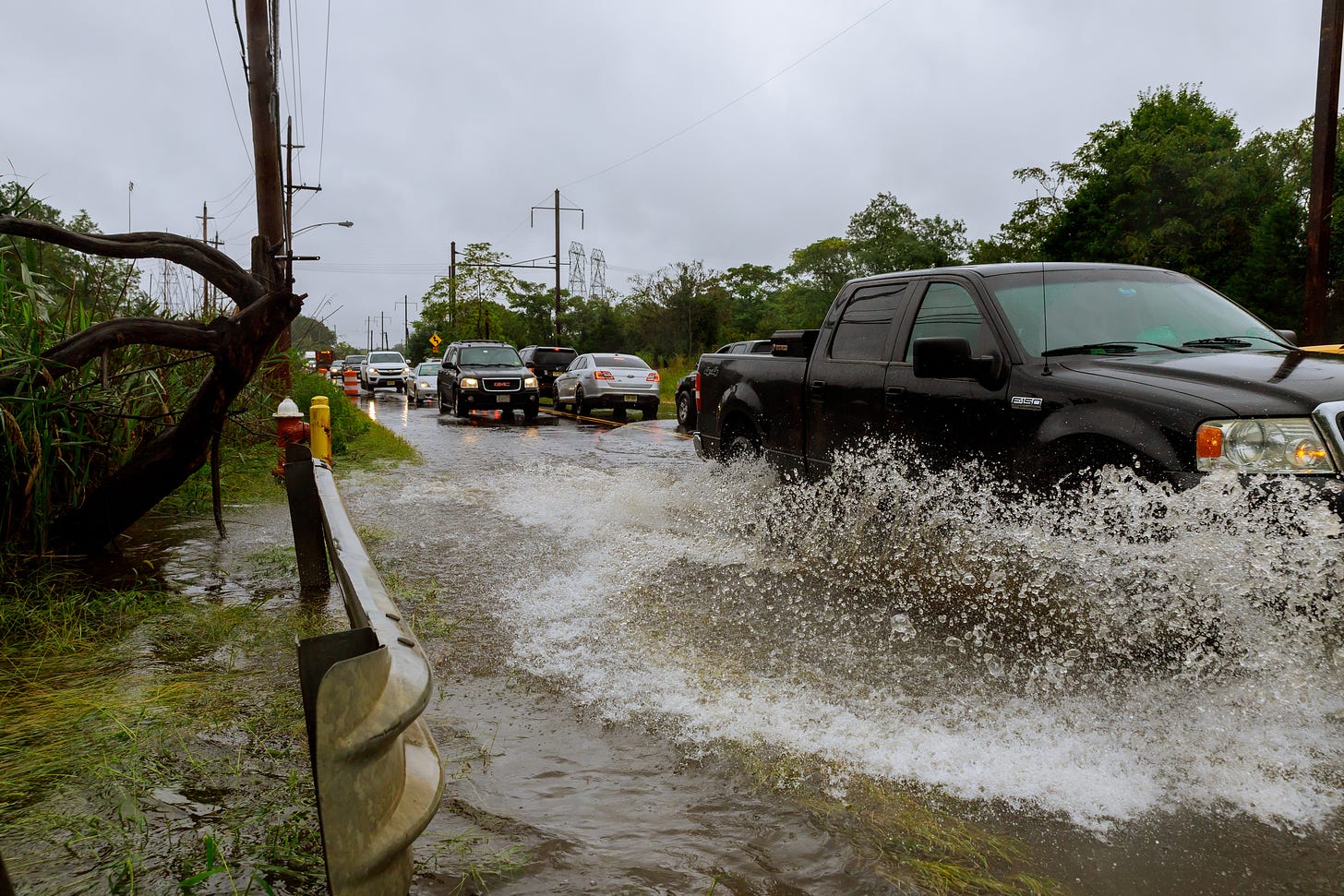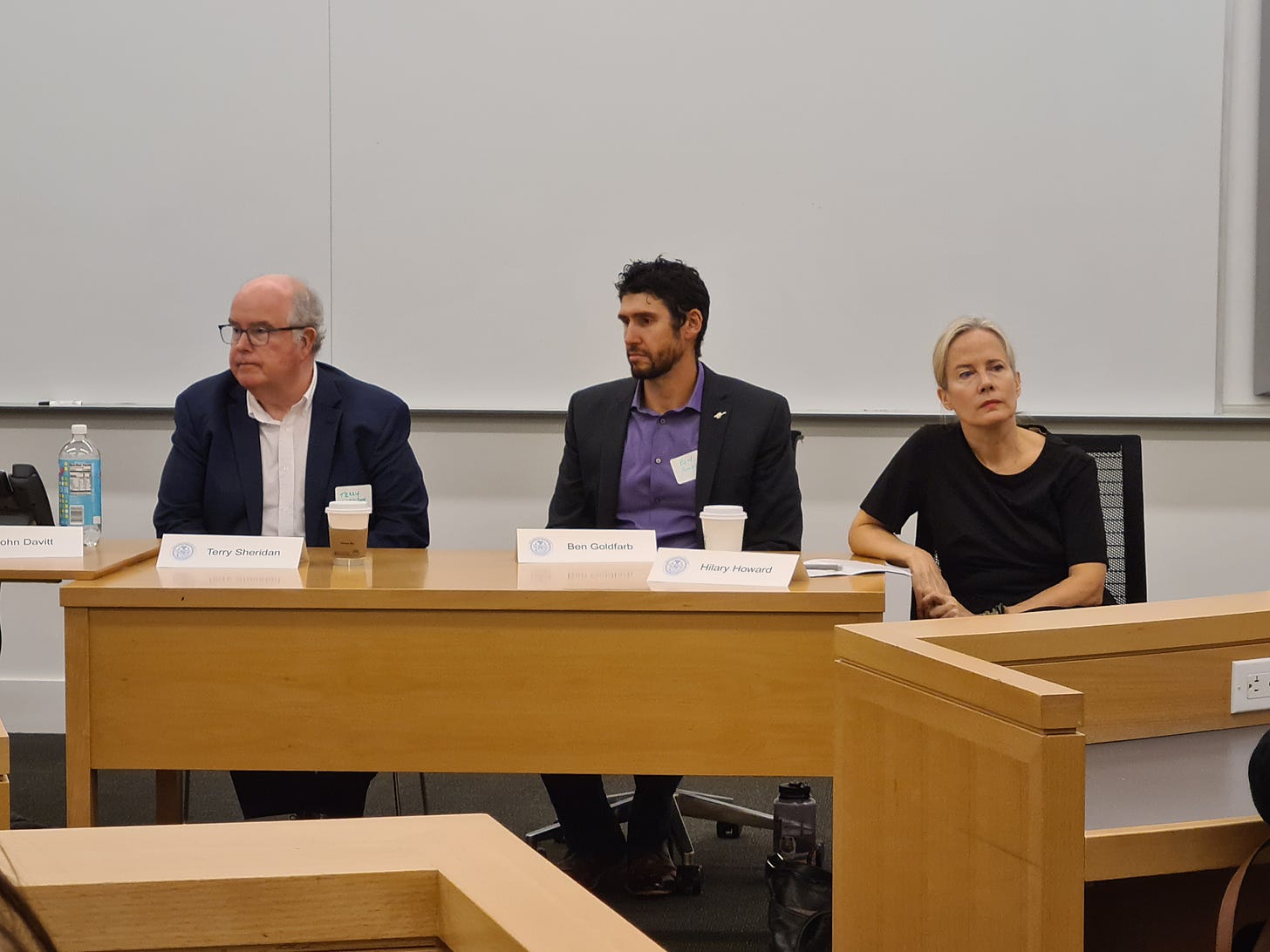There's climate angle in every news beat, environmental journalists say
Climate change a 'nonfactor' in 2024 presidential election, however

With climate change impacts permeation every aspect of lives, environmental reporters are taking a closer look at how the media covers the critical issue.
The consensus: While there has been progress, there's still room for improvement in providing accessible and actionable information to the public by reflecting a climate angle in every other beat.
The media has historically covered climate change when it related to individual extreme weather events with a rhetoric of it being a “climate catastrophe,” without offering context or solutions.
Terry Sheridan, senior director of news and education at WSHU, said news outlets have made strides in climate change coverage but cautioned against the tendency for journalists to delve too deeply into scientific intricacies.
“We need to explain that science to a general audience and in a way that is also actionable,” Sheridan said.
Hilary Howard, who covers climate change at The New York Times, said a broader integration of climate angles into various news beats could be helpful.
Drawing examples from her own interests, Howard pointed to how extreme weather conditions impact tennis matches during the U.S. Open, prompting investigations into the correlation between court color and heat absorption.
In the realms of fashion and travel, Howard finds stories that young people resonate with, such as the environmental impact of fast fashion and the influence of climate-related events on travel decisions.
“I think looking at those kinds of stories that are more relatable to a normal person instead of like straight climate science, it’s going to be a way to pursue this going forward,” Howard said.
Addressing the question of whether every newsroom requires a dedicated climate beat reporter, independent conservation journalist Ben Goldfarb said newsrooms across the country are “bleeding staff rather than having staff.”
As the issue intersects with other topics, Goldfarb echoed what Howard said.
Goldfarb proposed training existing reporters to be more fluent in climate change, enabling them to incorporate climate-related angles into their daily reporting seamlessly.
That’s something WSHU — a public radio that covers Connecticut and Long Island — has been doing, according to Sheridan.
Sheridan said he encouraged staff to weave "some sort of climate story" into every newscast, finding natural intersections with other beats.
For instance, a veterans and military reporter explored how the National Guards have adjusted training methods to focus on forest fires rather than traditional flood or hurricane responses. An Indigenous communities reporter delves into a tribe's collaboration with the University of Connecticut, teaching sustainability and self-sufficiency through farming.
“We’re not trying to shoehorn it artificially, but where there’s intersectionality,” Sheridan said.
Considering the often grim nature of climate reporting — like these: “Chicago, other cities could sink due to climate change, study warns” and “Millions of children are displaced due to extreme weather events. Climate change will make it worse.” — Sheridan said it’s still important to convey the severity of inaction without leaving the audience in a state of hopelessness
John Davitt, the chief meteorologist at Spectrum News NY1, supported this sentiment, suggesting including actionable steps in climate-related stories.
By providing information on how different modes of transportation affect emissions, for instance, reporters empower their audience to make informed choices.
“I think most of us, we want to help, we want to do something about it,” Davitt said. “So I think taking that time to add that piece of the puzzle when we’re delivering the news is good.”

Climate change and 2024 election
Looking ahead to the 2024 presidential election, opinions on the role of climate change vary.
Goldfarb believes it will be “a nonfactor” for the majority of American voters, despite its pervasive impact on various aspects of our lives.
“Of course, the outcome of the election will, in many ways, decide the future trajectory of emissions and understand the planet’s future itself,” he said. “A lot is at stake, and yet, it is not going to be a decisive factor.”
Survey data from the Pew Research Center indicated that while a significant percentage acknowledges the harm caused by climate change, it may not be a primary concern when considering the future of their communities in the next 30 years.
In a poll from the Center for Information & Research on Civic Learning and Engagement at Tufts University, 53% of young voters expressed concerns about inflation and the cost of living as their primary 2024 issues.
Living wage, gun violence and climate change trailed by more than 25 percentage points.
Sheridan, also a journalism instructor at Stony Brook University, said although climate change is important to young people, it may not be sufficient to sway the election.




